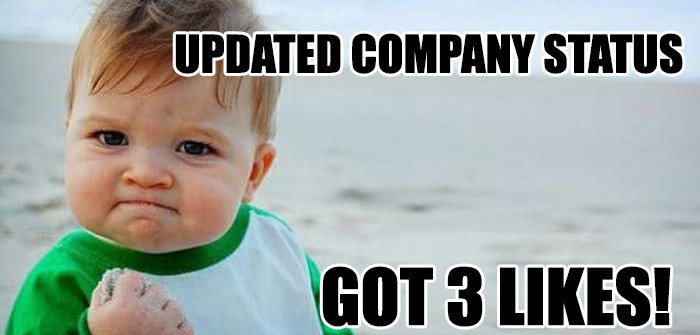I’ve been writing for a relatively long time. Like, close-to-15-years-a-long-time. First for student papers, then for print magazines, and since then for countless blogs and websites. Now I spend most of my time running my inbound marketing consultancy, so the only writing I really do anymore is the occasional potty-mouth guest post.
I basically only ever still write for shits-n’-giggles, and that’s only whenI can find the time.

Earlier this year, though, I had an opportunity to write a guest column for the Montreal Gazette. The prestige of writing for an established mainstream news outlet was sufficient that I found the time to do it.
It was a learning experience, and it afforded me some first-hand insight into some the structural and cultural challenges that formerly print-publishers face as they continue to pivot into digital media. But it also made me better appreciate much of what I already knew as a content marketer. Here are a few of those tidbits of content marketing wisdom ;)
1. Headlines are Call-to-Actions
News organizations follow all kinds of rules that other content publishers don’t have to. They mostly come down to journalistic standards, and mean that you can’t just write whatever you want to suit your needs.

Well, these journalist standards don’t leave much room for Clickbait.And while that’s not necessarily a bad thing, it does pose a bit of a challenge when you’re trying to use content to engage new and existing audiences.
For instance, I like to think I’m pretty good at crafting descriptive but catchyheadlines, but many of my post titles were edited to meet editorial guidelines before being published. The outcome was often a less than engaging item when I shared the content on social media, resulting in fewer clicks and shares, and generally less reach.
2. Social Media is Paramount
Which brings me to the second point. While discussing the column’s performance, I inquired what was being done to push it on social media. To my dismay, the answer was nothing.

The content wasn’t being posted to either their Facebook page or their Twitter. Proactively sharing their content on social media just wasn’t part of their ‘process’. Essentially, there was still an organizational expectation that audiences chased content, and not the other way around.
In the age of digital publishing, though, social media channels are more than just branded profiles. They’re content syndication networks, and probably the most important ones publishers have access to.
In other words, audiences don’t chase content, content chases audiences, and social media is its hunting ground.
3. Social Promotion is a ‘Publishing Costs’
Inasmuch as ‘social media is paramount’, it’s also a ‘publishing cost’. Just as you once had to invest in paper and ink and a distribution network to ‘publish’ something, you now have to invest in social media.

First, there is the time, processes, and tools you have to invest in just to make sure your content is posted to social media at all in the first place.
Then, there is the investment you have to make in promoting it to new and existing audiences alike, to make sure that people actually interact with it — click it, read it, share it, etc.
It’s not a case of “if you post it, they will come.” Rather, it’s a case of having to proactively chase the audience you’re targeting with the content they’re interested in. And that requires ad spend in the form of Sponsored Posts on at least on Facebook, and potentially across different social networks.
4. Direction Before Momentum
When you develop a content strategy, you generally start by defining its goals, choosing a direction based on those goals, and then planning out a strategy along that trajectory. In this case, that just wasn’t possible. The business happened to be in a state of flux, and every time it changed direction, momentum was lost.

In the two months my guest column ran, I went through 3 editors. It was a complete fluke of timing, but it happened.
The first editor I originally pitched to left for another job, an interim one steered the column in a different direction, and the (third) permanent replacement editor took it in another another direction still.
The kind of content I ended up writing was far-off from what I’d pitched, and wasn’t necessarily the kind of content I’m good at.
As the old adage goes, you don’t change horses midstream. Good content requires clear vision, direction, and follow-through. It’s the only way to really set users’ expectations and keep them clicking back for more. Otherwise, you’re taking little more than a spray-n’-pray approach, hoping something will stick.
Post Mortem
Content for business is different from content as business. As a content marketer, there are a series of best practices you should follow, but outside of those, your content can take on just about any approach toward marketing your products/services.
The content, after all, is just a means to an end that lies further down the conversion funnel.
When the content itself is the product/service, however, things get a bit trickier. Audience acquisition becomes a goal in and of itself, and building the trust and relationship it takes to retain that audience sometimes requires that you meet standards that are occasionally at odds with content marketing best practices.
So news organizations are left having to make compromises as they continue to adapt their business to new content ecosystems, and that underscores the importance of content marketing best practices that don’t conflict with journalistic standards. Indeed, where news organization can’t always entice (or even mislead) the way content marketers can (and sometimes must), they must excel in defining their audience, targeting it, and growing it across ever-changing distribution channels.